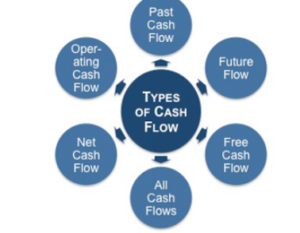Too Much Cash in a Small Business: When is Cash Really King?

By James Pruitt – Senior Staff Writer
Small businesses certainly need on-hand cash, and lots of it. A new business owner needs at least enough to cover any kinds of emergency costs, or unexpected costs, even on an everyday basis. But what happens when too much of a business’s assets remain as static, inert cash? Money should make money if not working further in other ways towards the business’s goals.
Small businesses can in fact have too much cash on hand. That cash should work for the business rather than lay stagnant in bank accounts. However, the art of cash flow management is very challenging and eludes many business owners.
The concept of return on assets can help a determination of whether standing cash does or does not work for the business. Return on assets simply asks the question of whether a business’s money or resources could better work somewhere else? If the answer is negative, perhaps the owner should consider a diversification of the company’s portfolio. Business owners should consider and make such a determination once or twice a year.
What alternatives might diversify a company’s portfolio? Perhaps the redeployment of existing monies could better serve the company. Few metrics in business have greater importance than return on assets. Assuming a pool of cash stagnates in a forgotten bank account, what alternatives can revitalize that rotting pond? Many alternatives can diversify these assets. Among these are bonds, healthy stocks, and CDs.
Depending on the nature of your company and the legal considerations, the best option may be removal of funds to your personal retirement account or your kids’ college account. Consider whether legal considerations restrict your company from intermingling personal from business funds (such as partnership or incorporation situations). However, such options should be readily available to small business and home businesses.
Frequently recommended is six months of “operating cash” for your business. “Operating cash” generally means cash necessary for basic expenses such as recurring labor, utilities, rent, and recurring purchases. Assuming such cash in the coffers, owners may benefit in three ways.
First, standing operating cash backs up any outside negotiations. Business decisions should start from a position of strength. The toxic scent of desperation poisons business deals. Vendors, partners, and suppliers often smell this scent before the owners themselves. Owners should always maintain some wiggle room for negotiation. The best deals do not happen when the owner needs something tomorrow. Having six months of cash flow on-hand relieves the urgency of this type of tension. Decisions under excessive stress rarely provide the absolute best outcomes.
Second, the past ten or fifteen years warns of the inevitable ebb and flow of the economy. Always assume dry spots. Six months of on-hand cash may guide your business through those straits. Just as individuals should keep personal emergency funds, businesses should keep that six months of operating cash for economic emergencies. Small businesses especially will not regret it. The current pandemic has changed all of the dynamics and rules.
Third, consider the development of your company. Much can happen in six months. Your business plan may change, you may get new ideas, you may discover new opportunities. A six-month supply may allow owners to redirect their business ventures, and see new ideas come to fruition.
On-hand cash flow is important. Businesses should always have emergency funds. However, stagnant cash does small businesses no favors. Options are limitless for secure management of unused cash. Whether through investments, lucrative deals, or new ideas, business owners should stream those monies out of that stagnant pond, assuming the money does not work for the company in situ. As always, balance is the key.
VAMBOA, the Veterans and Military Business Owners Association, hopes that you have enjoyed these articles addressing various aspects of Cash Flow. We work very hard to bring our audience timely and valuable information.
VAMBOA does not charge members any dues or fees. If you are not yet a member of VAMBOA, please join here: https://vamboa.org/member-registration/
Members may use our seal on their web sites and collateral and will receive special discounts and other important information.











